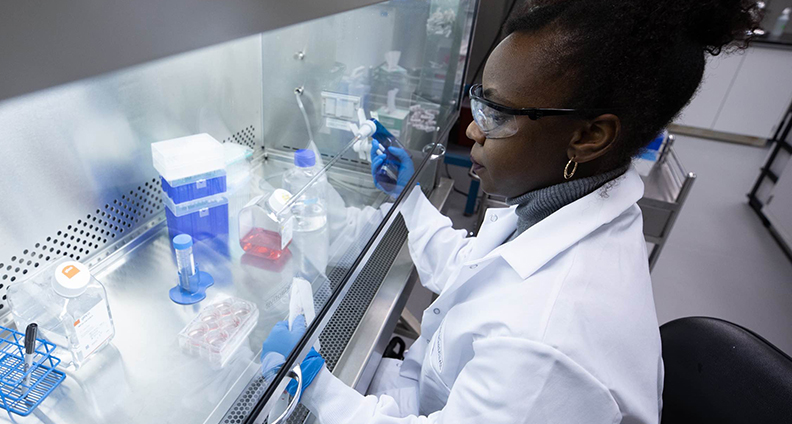
Theradaptive is a venture-backed company that received three FDA Breakthrough Device Designations over eight months for its regenerative implants. Like its notable nods from FDA, the company’s origin story is impressive. Theradaptive Founder and CEO Luis Alvarez, Ph.D., noticed a significant need for medical care after serving as a soldier in the U.S. Army.
“I noticed the first problem that led to the development of our technology when I redeployed back from Iraq,” Dr. Alvarez said. “Many of my former undergrad colleagues from West Point were physicians who were treating conditions related to combat injury. A problem was emerging in which service members were suffering delayed amputation weeks or months after their initial injuries.”
Dr. Alvarez was curious about the reason for the delays, and discovered that the problem was caused by the body’s inability to regrow specific tissues — bone, in particular. If the bone doesn’t heal properly, the limb could never be used again, and the patient often faces amputation.
The problem motivated Dr. Alvarez to return to graduate school and then pursue a Ph.D. in biological engineering. While working on his Ph.D. at MIT, he developed the foundation for Theradaptive’s solution.
A Novel Technology
Dr. Alvarez’s work at MIT focused on localizing proteins to facilitate tissue regrowth. That research led to the founding of Theradaptive in 2016. The core problem that Theradaptive’s technology has already started to solve is how to target a therapeutic to a specific area of the body.
“Right now, it’s hard to do with proteins,” Dr. Alvarez said. “Proteins are a class of therapeutics that are commonly used to treat diseases, but there’s no easy way to keep them in a specific place in the body. Our technology allows us to do that with not just the protein we’re using for spine orthopedics, but for virtually any protein you want to keep in a specific place in the body for a long period of time.”
Theradaptive’s process modifies the natural protein sequence slightly and adds additional sequences to the protein. This enables the company to make the entire molecule using a cell-based system with well-established recombinant DNA technology.
The company has developed hundreds of material-binding variants of various recombinant proteins for use in over a dozen clinical indications, ranging from spinal fusion, dental and orthopedics to soft tissue repair and targeted chemotherapeutics. The modified proteins address current limitations, including off-target side effects associated with existing protein therapeutics.
“We make the new protein in bioreactors or fermentors and then purify it from there,” Dr. Alvarez said. “Then, we combine that protein with the implant in another process and that makes the final product, which is the implant with the fully genetically encoded protein.”
Theradaptive can use the protein to coat implants without chemistry or exotic processing. The implant is coated in a 10- to 15-minute dipping procedure, making for a simple manufacturing process.
Bringing the Solution to Market
Theradaptive has successfully gained three Breakthrough Device Designations from FDA for its OsteoAdapt SP spine implant. The platform technology received designations for spinal fusion, transforaminal interbody fusion and posterolateral fusion. The designations are expected to accelerate the company’s commercialization significantly.
“The opportunity lies in the ability of this product to change the way physicians regenerate bone and perform surgery in a simpler way to reduce revision rates, reduce complications and make the procedure easier,” Dr. Alvarez said. “This technology will be a great enabler of changes in the practice of medicine that could open the door to the use of additional therapeutics in combination with devices and implants.”
The company’s leaders recently published an article about the emergence of protein-device combination products. They’re hopeful that approval in a first and even second indication will open the door to innovative thinking in the orthobiologics space, as much of the orthopedic industry is focused on FDA 510(k)-cleared products.
Theradaptive will soon look to partner with orthopedic and spine companies that want a transformative, groundbreaking new therapeutic in their product portfolio.
“We are open to establishing collaborations with others who would like to advance their technologies into a new category that we think will displace many of the legacy products,” Dr. Alvarez said.
Theradaptive faces an immediate challenge and an opportunity in choosing a clinical indication to pursue first, Dr. Alvarez said. The company has picked spinal fusion and dental to start, and expects to begin human clinical studies in the latter part of 2023.
HT
Heather Tunstall is a BONEZONE Contributor.




